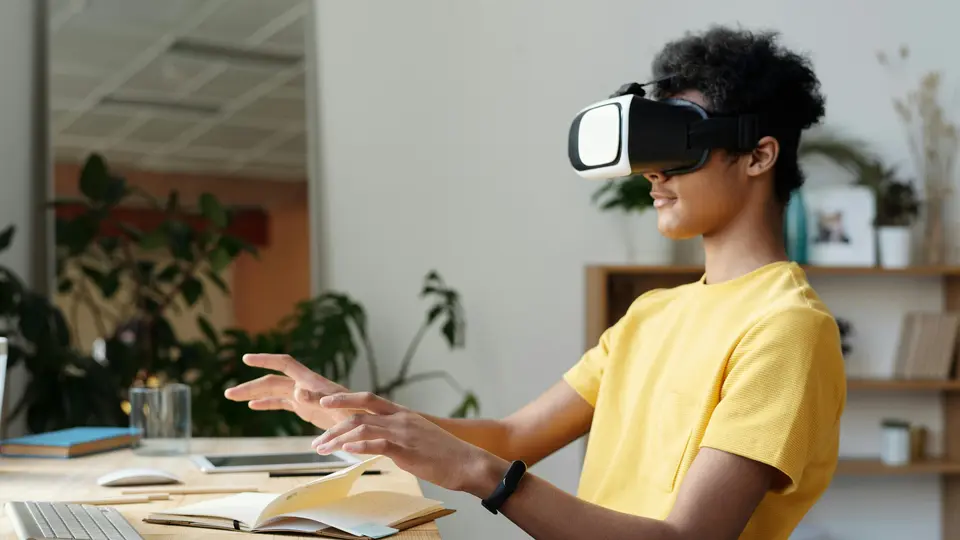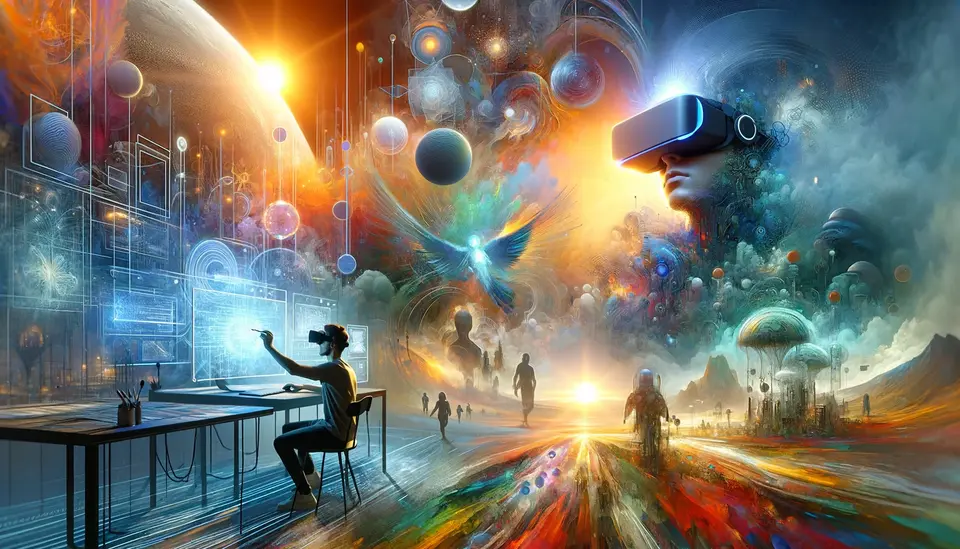15 Examples of the Use of Virtual Reality (VR) in E-commerce
Posted on March 27, 2023 5 minutes 939 words
Table of contents
- 1. Product customization
- 2. Gamified shopping experiences
- 3. Virtual showrooms and stores
- 4. Virtual fitting rooms
- 5. 360-degree product views
- 6. VR product demonstrations
- 7. Immersive travel booking
- 8. Virtual reality training and education
- 9. Virtual art galleries and auctions
- 10. Virtual brand events
- 11. Augmented reality product placement
- 12. Virtual social shopping
- 13. Immersive customer support
- 14. Data-driven shopping experiences
- 15. VR-based advertising and marketing
- Conclusion
Virtual Reality (VR) is revolutionizing the e-commerce industry by offering immersive and personalized shopping experiences. This blog post explores 15 innovative examples of how VR is being utilized in e-commerce, transforming the way consumers shop and interact with brands. From virtual showrooms to data-driven shopping experiences, let’s dive into the exciting world of VR in e-commerce.
1. Product customization
Virtual Reality enables users to customize products like furniture, clothing, and cars in a 3D environment, providing a personalized shopping experience. Companies like Nike and BMW offer customization options within their VR apps, allowing customers to design their dream shoes or cars before placing an order.
2. Gamified shopping experiences
Some brands are gamifying their e-commerce platforms using VR, creating immersive shopping experiences that engage and entertain users. Alibaba’s Buy+ VR shopping platform, for example, transports users to a virtual mall where they can explore stores, interact with products, and make purchases.
3. Virtual showrooms and stores
Retail giants like IKEA and Amazon are creating virtual stores and showrooms, allowing customers to explore products in a 3D environment and make informed purchasing decisions. IKEA’s VR app, IKEA Place, enables users to virtually walk through a showroom and visualize how furniture would look in their homes. Amazon’s Sumerian platform allows businesses to create their own virtual storefronts, attracting customers with a new level of immersion.
4. Virtual fitting rooms
Companies like Fitnect and Metail offer virtual fitting room solutions where customers can try on clothes virtually, ensuring the right fit and reducing returns. Gap’s DressingRoom app, for example, allows users to choose a virtual mannequin that matches their body type and try on clothes to see how they fit and look.
5. 360-degree product views
With VR, customers can now view products in 360 degrees, allowing them to examine items from every angle, enhancing their understanding and confidence in their purchase. Online retailers like eBay and ASOS have integrated 360-degree product views into their platforms, helping customers make more informed decisions.
6. VR product demonstrations
VR allows for interactive product demos, enabling customers to get a feel for how a product works before making a purchase. Lowe’s Holoroom Test Drive is an excellent example, where customers can virtually experience operating power tools in a safe and controlled environment.
7. Immersive travel booking
Travel agencies like Expedia and Thomas Cook use VR to showcase destinations, allowing customers to virtually explore vacation spots before booking. Expedia’s VR app, for instance, provides 360-degree tours of hotel rooms, tourist attractions, and local experiences, giving users a taste of their desired destination.
8. Virtual reality training and education
E-commerce platforms are offering VR-based training and educational content to help customers better understand and use their products. Sephora, for example, has a Virtual Artist feature that teaches users how to apply makeup through step-by-step VR tutorials.
9. Virtual art galleries and auctions
Online art platforms like Artsy and Paddle8 are integrating VR, enabling users to virtually walk through galleries and bid on artwork. This not only enhances the art buying experience but also helps reach a wider audience who may not have access to traditional galleries.
10. Virtual brand events
Companies are hosting virtual events, such as product launches and fashion shows, to engage customers and create buzz around their brand. Balenciaga’s virtual fashion show and Volvo’s VR car launch are perfect examples of how brands are utilizing VR to build excitement and showcase their latest products.
11. Augmented reality product placement
Retailers are using AR to project virtual products into customers’ homes, allowing them to visualize how items will fit and look in their space. Home furnishing store Wayfair is a great example of this, with their app WayfairView. The app uses AR technology to allow customers to place virtual furniture in their homes and see how it fits within their existing space. This helps customers make more informed decisions and reduces the likelihood of returns.
12. Virtual social shopping
Companies are integrating social features into their VR shopping experiences, enabling customers to shop with friends and get real-time feedback. Social VR platforms like vTime allow users to meet up with friends in a virtual environment and shop together, discussing products and seeking opinions before making a purchase.
13. Immersive customer support
VR-based customer support enables customers to interact with representatives in a virtual environment, providing personalized assistance and troubleshooting. For example, Audi’s VR-based customer support system allows users to virtually sit inside a car while a support representative walks them through the features and answers any questions they may have.
14. Data-driven shopping experiences
Retailers are using VR and data analytics to create personalized shopping experiences based on customer preferences and browsing history. Japanese retailer Uniqlo, for instance, has developed a VR fitting room that suggests clothing items based on the user’s past purchases and preferences, creating a tailored shopping experience.
15. VR-based advertising and marketing
Brands are developing immersive VR advertisements and experiences to capture customer attention and promote their products in unique ways. For example, Coca-Cola created a VR sleigh ride experience to promote their holiday campaign, while Marriott Hotels developed a VR teleportation experience, allowing users to virtually visit their hotels and explore various destinations.
Conclusion
Virtual Reality is transforming the world of e-commerce, offering customers immersive and engaging shopping experiences that go beyond the traditional online storefront. As technology continues to advance, we can expect to see even more innovative applications of VR in the e-commerce industry. By embracing VR, businesses can provide unparalleled shopping experiences that not only delight customers but also help them make more informed purchasing decisions.








